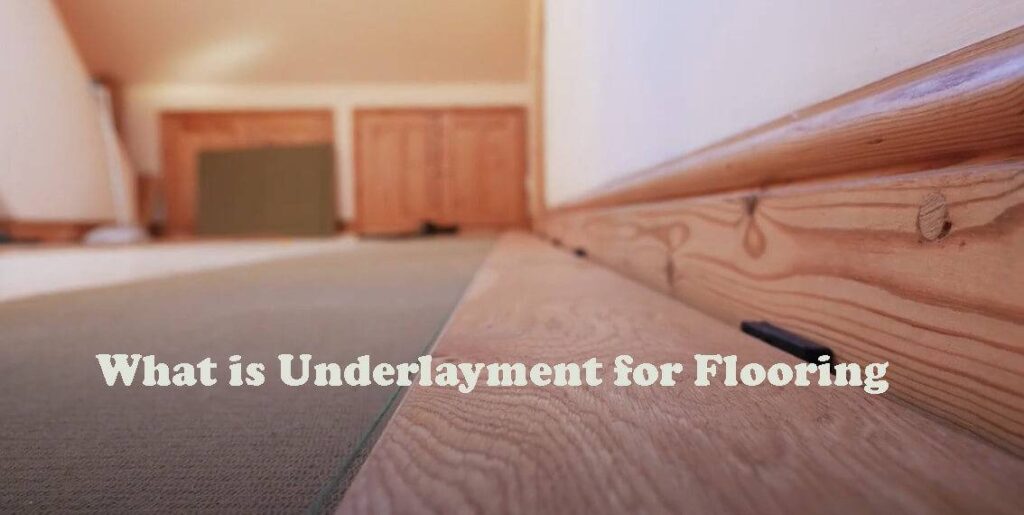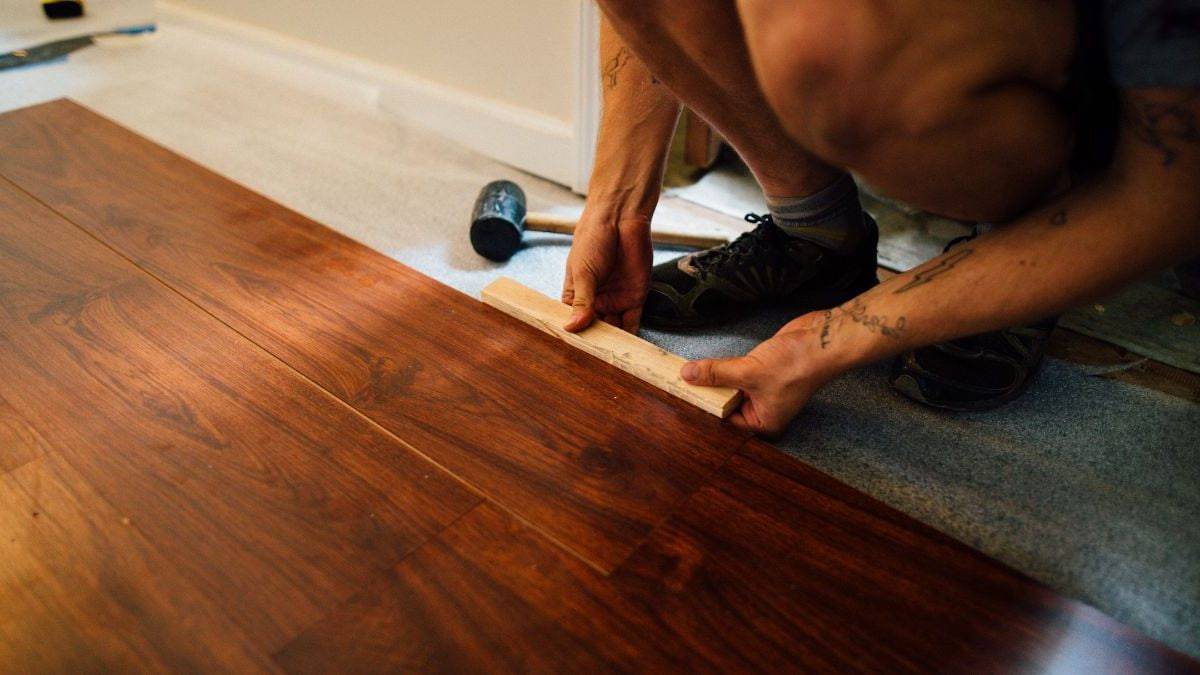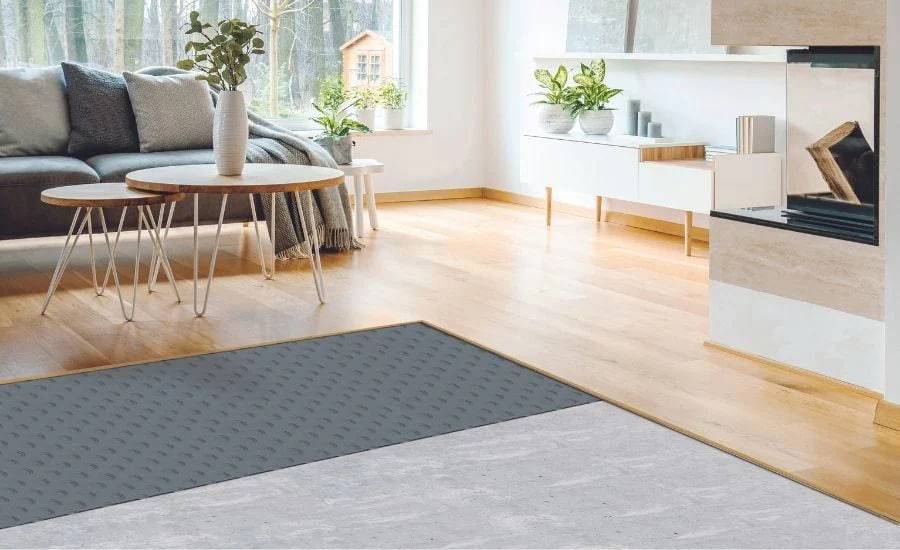Have you ever wondered what lies beneath the beautiful new floor you admire? That hidden hero, quietly contributing to its comfort, longevity, and sound performance, is called underlayment. Often overlooked, this thin layer plays a crucial role in creating a solid foundation for your floors.
But what exactly is underlayment, and why is it so important? This guide dives deep into the world of flooring support, unveiling its benefits, different types, and crucial considerations for every project. Prepare to be surprised by the surprising power of this unseen layer, from creating a smooth canvas for flawless installation to shielding your floors from moisture and wear.
So, whether you’re a seasoned DIYer or a curious homeowner, join us as we peel back the layers and uncover the fascinating world of flooring underlayment. Buckle up and get ready to step into a world of comfort, soundproofing, and extended floor life!
The Unsung Hero of Your Floor: What is Flooring Underlayment?
Imagine a beautiful new floor, gleaming and inviting. But beneath its surface lies a hidden champion, silently contributing to its comfort, longevity, and overall performance. This unsung hero? Flooring underlayment. It might not be glamorous, but it’s crucial for any successful flooring project.
So, what exactly is underlayment? Simply put, it’s a thin layer of material installed between the subfloor (the base structure beneath your floor) and the final flooring itself. It comes in various forms, from foam and cork to rubber and plywood, each offering unique benefits.
But why is this hidden layer so important? Here are some of the key roles it plays:
- Creates a smooth, level surface: Subfloors aren’t always perfectly flat. Underlayment fills in minor imperfections, ensuring a smooth and even base for your new floor. This prevents uneven planks, squeaks, and potential damage.
- Adds comfort and cushioning: Whether you’re walking barefoot or wearing heels, underlayment provides a softer, more forgiving surface. This makes your floors more comfortable to walk on, especially for hard materials like tile or laminate.
- Provides sound insulation: Tired of noisy footsteps echoing through your space? Underlayment helps absorb sound waves, reducing noise transmission and creating a quieter environment. This is especially beneficial in multi-story homes or apartments.
- Acts as a moisture barrier: Moisture can be a major enemy of floors, leading to warping, buckling, and mold growth. Underlayment with a vapor barrier can help protect your floors from moisture damage, particularly crucial in basements or areas prone to spills.
- Extends floor life: By providing support, cushion, and moisture protection, underlayment helps your floors last longer and maintain their good looks. It’s an investment that pays off in the long run!
Now that you understand the importance of underlayment, stay tuned for our next section where we explore different types and help you choose the right one for your specific flooring project!
Where Underlayment Fits in a Floor Structure?
Underlayment plays a crucial role in a floor structure, acting as the hidden layer between the subfloor and the finished flooring. Here’s a breakdown of its position:
Floor Structure Layers:
- Joists: These are the horizontal beams that support the entire floor structure. They span between walls or other supports and are typically made of wood.
- Subfloor: This is the structural base layer that sits on top of the joists. It’s usually made of plywood or oriented strand board (OSB) and provides a flat, stable surface for the underlayment and finished flooring.
- Underlayment: This is the thin layer of material that goes on top of the subfloor. It provides several benefits, including smoothing out minor imperfections, adding cushioning and comfort, reducing sound transmission, acting as a moisture barrier, and extending the life of the finished flooring.
- Finished Flooring: This is the final layer that you walk on, such as hardwood, tile, laminate, carpet, or vinyl.
Underlayment Placement:
The underlayment is installed directly on top of the subfloor, covering the entire surface area. It’s crucial to choose the right type of underlayment for your specific flooring type and subfloor condition. Different materials offer different properties, so ensure you match the needs of your project.
The Invisible Armor of Your Floor: Unveiling the Benefits of Underlayment
Underneath the beautiful surface of your new floor lies a hidden hero – underlayment. Don’t let its lack of glamour fool you! This thin layer plays a crucial role in boosting your floor’s performance, longevity, and comfort. Let’s delve into the many benefits that underlayment offers:
-
A Smooth Start:
- Leveling the Playing Field:Uneven subfloors are the enemies of flawless flooring. Underlayment acts as a smoothing agent, filling in minor imperfections and creating a level foundation. This translates to:
- Reduced squeaks and creaks: No more annoying noises every time you take a step!
- Enhanced stability: Floors feel more solid and secure, preventing uneven planks or tiles.
- Improved appearance: Perfect installation leads to a more aesthetically pleasing finished floor.
-
Comfort Underfoot: Walking on Sunshine (or Not!)
Hard flooring like tile or laminate can be harsh on your feet. Underlayment provides a cushioning effect, making your floors:
- Softer and more comfortable: Especially noticeable when walking barefoot or in socks.
- Warmer to the touch: Adds a layer of insulation, enhancing comfort in colder climates.
- More forgiving on your joints: Reduces stress on knees and ankles, particularly beneficial for active households.
-
Hush Hush: Silencing the Footsteps
Echoing footsteps can disrupt the peace of your home. Underlayment acts as a sound dampener, absorbing sound waves and:
- Reducing noise transmission: Creating a quieter environment between floors or in multi-story homes.
- Improving acoustic performance: Ideal for home theaters, music rooms, or areas requiring peace and quiet.
- Boosting privacy: Muffles sounds, helping maintain confidentiality in offices or personal spaces.
-
Moisture Barrier: Protecting Your Investment
Moisture is a major threat to any floor, leading to warping, buckling, and mold growth. Underlayment with a vapor barrier can:
- Protect your subfloor and finished flooring from moisture damage caused by spills, leaks, or humidity.
- Extend the lifespan of your floors: By preventing moisture-related issues, you’ll enjoy your floors for longer.
- Maintain floor integrity: Protects against warping, cupping, and delamination, preserving the look and functionality of your floors.
-
Longevity Partner: Making Your Floors Last
By addressing unevenness, providing cushioning, and offering moisture protection, underlayment contributes significantly to the lifespan of your floors. Imagine:
- Avoiding premature repairs or replacements: Saving you money and hassle in the long run.
- Maintaining the value of your property: Floors in good condition enhance the overall value of your home.
- Peace of mind: Knowing your investment is protected and you’ll enjoy your beautiful floors for years to come.
Soft Underlayments: Comfort with Caveats
Want softer, quieter laminate flooring? Soft underlayments like foam and cork can be tempting, but consider these key points:
Smoothing Out the Rough:
- These materials act as gentle buffers, hiding minor imperfections like bumps or small holes in your subfloor (or even an existing good-condition floor). No more uneven planks or clunky steps!
Floating for Flexibility:
- Unlike rigid underlayments, soft ones aren’t attached to the subfloor. This flexible approach makes them suitable for installing new flooring directly over existing ones, like laminate over tile.
Think Twice Before Replacing:
- Soft underlayments aren’t meant to replace sturdy, rigid options directly on the subfloor. They offer comfort, not structural support.
Perfect Partners:
- When paired with an existing, stable floor, soft underlayments become great allies. A layer of foam or cork over your old tile, for example, can create a comfortable base for laminate.
Double the Benefits:
- Layering soft underlayment on top of a rigid one offers double the goodness! You get the structural support of the first layer and the plush cushioning of the second, making your laminate feel less “hollow” and sound quieter.
Conclusion
So, as we peel back the layers and conclude this exploration, remember this: underlayment, though often unseen, plays a vital role in the performance, longevity, and comfort of your floors. It’s the silent champion beneath your feet, ensuring a smooth, level surface, adding cushioning and soundproofing, and even protecting your floor from moisture damage.
Whether you’re a seasoned DIYer or a curious homeowner, don’t underestimate the importance of this hidden layer. Choose the right underlayment for your specific project, and you’ll be rewarded with a floor that feels good underfoot, performs flawlessly, and lasts for years to come.
Think of it this way: investing in quality underlayment is like building a strong foundation for your beautiful new floor. It might not be the most glamorous part, but it’s essential for ensuring a solid, comfortable, and long-lasting home environment. So, step into the knowledge you’ve gained, choose the right underlayment for your needs, and enjoy the benefits for years to come!
FAQs about Flooring Underlayment:
Do I always need underlayment for my new floor?
Not always! If your subfloor is perfectly level and in good condition, some types of flooring may not require underlayment. However, it’s generally recommended to use underlayment for most flooring projects as it offers numerous benefits like:
- Leveling minor imperfections
- Adding comfort and cushioning
- Reducing noise transmission
- Acting as a moisture barrier
- Extending the lifespan of your floor
What type of underlayment should I choose?
The best underlayment for your project depends on several factors, including:
- Type of flooring you’re installing: Different flooring types have different requirements.
- Condition of your subfloor: Unevenness or moisture issues might require specific underlayment features.
- Desired benefits: Are you prioritizing comfort, soundproofing, or moisture protection?
Consulting a professional or researching your specific flooring type can help you choose the right underlayment.
Can I install underlayment myself?
Most underlayment materials are relatively easy to install, requiring tools like a utility knife and tape. However, the complexity can vary depending on the type. If you’re unsure about your DIY skills, consulting a professional installer is always a good option.
Is there a difference between “cheap” and “expensive” underlayment?
Generally, yes. Higher-quality underlayment often offers better performance in terms of:
- Durability: Lasting longer and providing consistent support.
- Moisture resistance: More effectively protecting your floor from moisture damage.
- Sound absorption: Offering superior noise reduction.
While a more expensive underlayment might be a small upfront investment, it can save you money and hassle in the long run.
What are some common mistakes to avoid with underlayment?
- Using the wrong type for your specific needs.
- Not properly measuring and cutting the underlayment.
- Leaving gaps or overlaps in the underlayment.
- Failing to address moisture issues in the subfloor before installation.
Does using underlayment affect the overall thickness of my floor?
Yes, underlayment will add a thin layer to the total thickness of your floor. Be sure to factor this in when making measurements for doors, transitions, and other elements.



